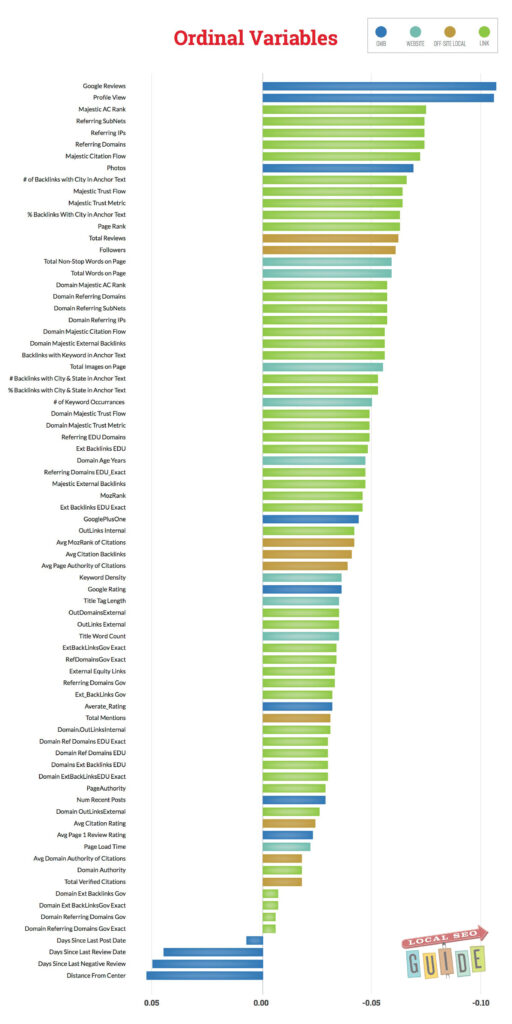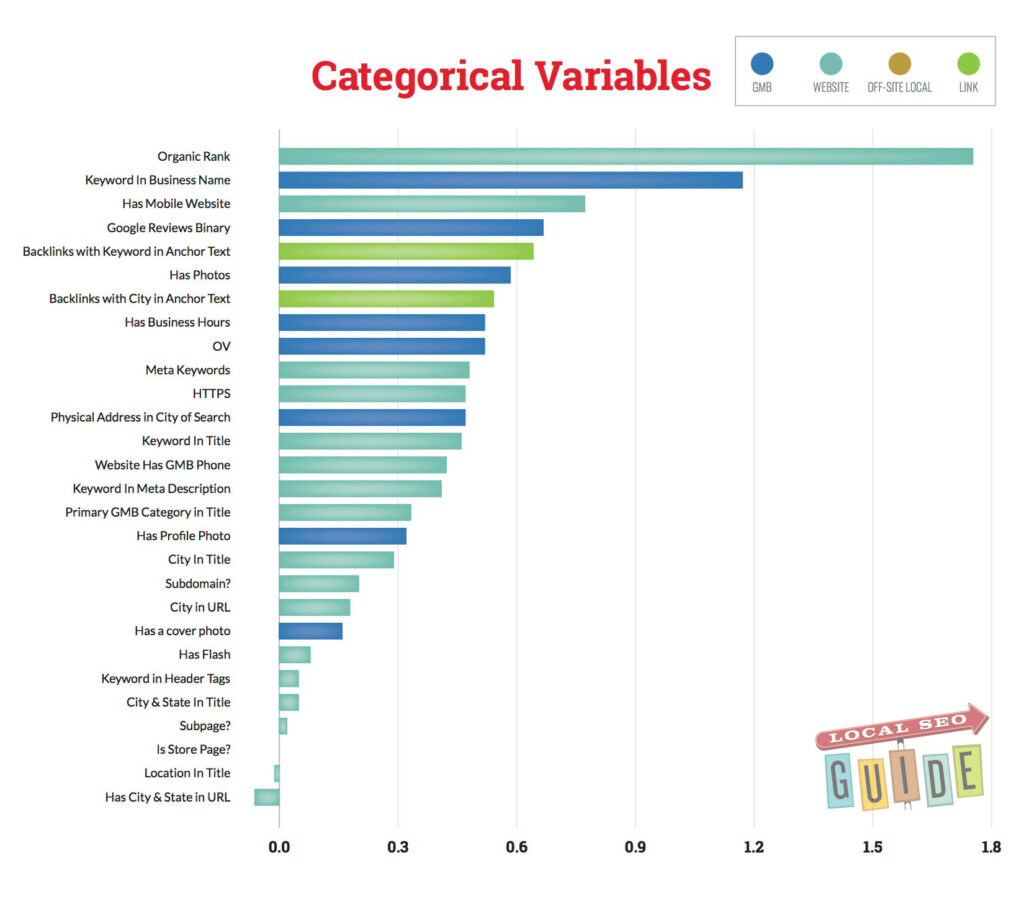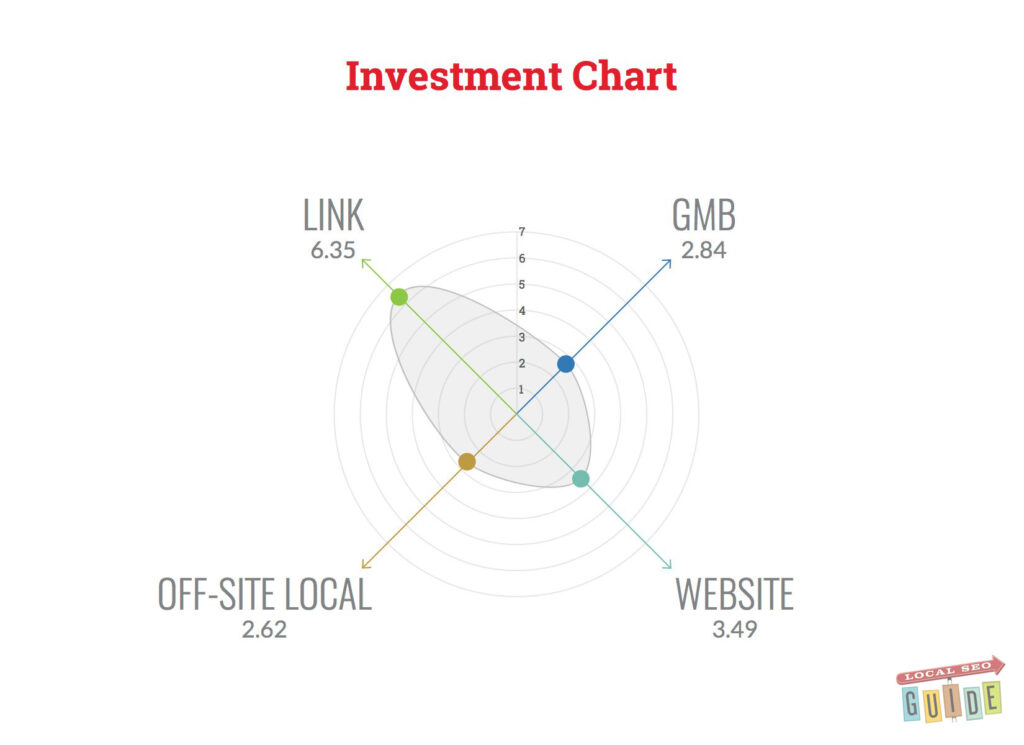Links
Links Are The New… Links?
Since Pigeon rolled out in 2014, Local SEO’s have been saying that traditional SEO signals, like links, rather than traditional local ranking factors like a business listing, will become more important in the Local SEO space… And now we have the data to prove it! It looks like links are the key competitive differentiator even when it comes to Google My Business Rankings. Interestingly, of all the proprietary metrics we looked at, Majestic’s are killing it. The data shows that AC Rank, Trust Flow, and Citation Flow are all top 10 link metrics, so if you need to look at the domain authority of a website we would recommend giving Majestic a try.
Website
More Words = More Local Rankings?
Several website signals showed a strong likelihood of influencing Google My Business performance. Keyword Usage and Words on Page, very traditional organic ranking signals, show that, despite claims that Google is moving to new and more sophisticated ranking methods, keyword usage and user engagement still matter. While we’ll always recommend relevant, well-written landing pages, it may be that just piling on more words could be enough to push you up.
Off-Site Local Signals
Citations Are The Commodity of Local SEO
The relatively poor performance of Citations may seem controversial, but we think it makes a lot of sense. Business listings aka citations are more or less a commodity at this point, so for competitive searches and in competitive markets, they are a poor differentiator between businesses. We have done studies that show citation consistency can be a key factor to getting you into a local 3-pack – so don’t ignore them – but the “strength” or volume of citations sources just doesn’t seem to matter as much. Get your business information aka NAP (Name, Address and Phone Number) cleaned up and move on as fast as you can to higher value work.
Google My Business
Winners Tend To Win
Google My Business (GMB) signals had a strong showing. Things like native Google Reviews and Photos and having an Owner Verified (OV) profile correlated with positive GMB performance. Despite Profile Views being a big winner in the data, we think it underscores that correlation is not causation. After all, if you are ranking well, it’s likely more people will view your profile. Next year’s version of the study should be able to better demonstrate the myriad ways in which positive reviews, and their content, may or may not influence GMB rankings. That said, the Categorical Variables below show some interesting correlation data for GMB factors.




